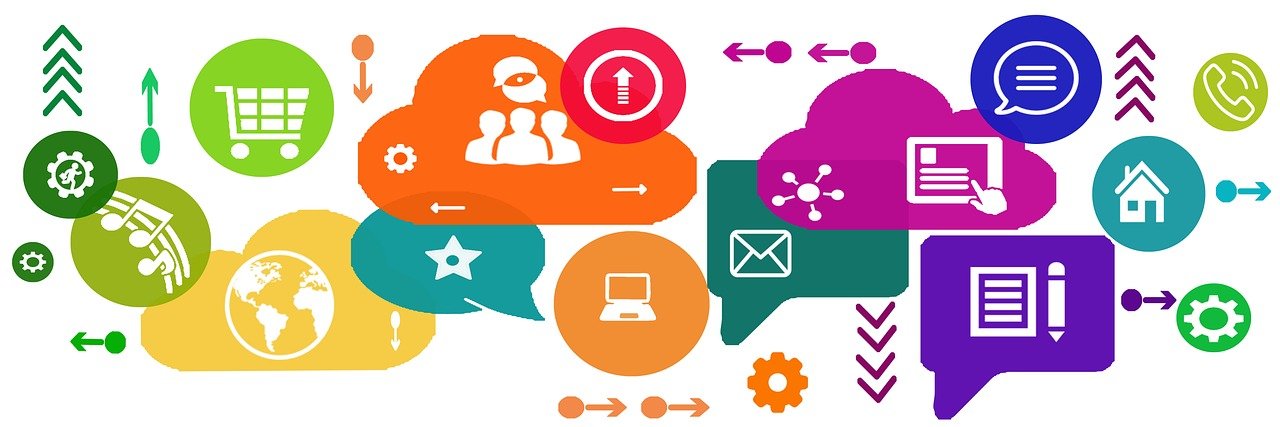Open-source software (OSS) is revolutionizing the digital landscape, offering a transparent, collaborative, and often more affordable alternative to proprietary software. From operating systems powering millions of devices to essential tools used by developers worldwide, OSS is a cornerstone of modern technology. This article delves into the core concepts of open-source, exploring its benefits, licensing models, popular examples, and how you can contribute to the open-source community.
What is Open-Source Software?
Defining Open-Source
Open-source software refers to software with source code that is publicly accessible. This means anyone can view, modify, and distribute the code as they see fit, typically under the terms of a specific open-source license. This contrasts sharply with proprietary software, where the source code is kept secret and users are granted limited rights to use the software.
- Transparency: The code is open for anyone to inspect, fostering trust and accountability.
- Collaboration: Developers from around the world can contribute to the project, leading to faster innovation and bug fixes.
- Community-Driven: Open-source projects are often driven by a vibrant community of developers, users, and enthusiasts.
The Open Source Initiative (OSI)
The Open Source Initiative (OSI) is a globally recognized organization that promotes and protects open-source software. The OSI provides a definitive definition of “open source” and approves licenses that meet its criteria. These criteria include:
- Free Redistribution: The license must allow free redistribution of the software.
- Source Code: The program must include source code and allow distribution of source code as well as compiled form.
- Derived Works: The license must allow modifications and derived works.
- Integrity of The Author’s Source Code: The license may restrict source-code from being distributed in modified form only if the license allows the distribution of “patch files” with the source code for the purpose of modifying the program at build time.
- No Discrimination Against Persons or Groups: The license must not discriminate against any person or group of persons.
- No Discrimination Against Fields of Endeavor: The license must not restrict anyone from making use of the program in a specific field of endeavor.
Benefits of Using Open-Source Software
Cost-Effectiveness
One of the most significant advantages of OSS is its cost. While some open-source projects may offer paid support or premium versions, the core software is typically free to use. This can lead to substantial cost savings, especially for businesses.
- Lower licensing fees.
- Reduced infrastructure costs (often OSS is more lightweight).
- Opportunity to contribute back instead of solely paying for a product.
Flexibility and Customization
Open-source software grants users unparalleled flexibility and customization options. Because you have access to the source code, you can modify the software to meet your specific needs.
- Tailor software to your specific requirements.
- Integrate OSS with other systems more easily.
- Adapt the software to evolving business needs.
Security and Reliability
Contrary to common misconceptions, open-source software can be more secure and reliable than proprietary software. The transparency of the code allows for greater scrutiny, enabling developers to identify and fix vulnerabilities more quickly.
- Many eyes reviewing the code lead to quicker identification of vulnerabilities.
- Rapid response to security threats by a global community.
- Community testing and feedback contribute to higher quality code. According to a recent study, open-source projects often have fewer bugs than comparable proprietary projects.
Popular Open-Source Licenses
GNU General Public License (GPL)
The GNU General Public License (GPL) is one of the most widely used open-source licenses. It is a copyleft license, which means that any derivative works based on GPL-licensed code must also be licensed under the GPL. This ensures that the software remains open-source. Examples of software using GPL include Linux and WordPress (partially).
MIT License
The MIT License is a permissive license, meaning it places minimal restrictions on how the software can be used, modified, and distributed. You can even incorporate MIT-licensed code into proprietary projects. This is a popular choice for libraries and frameworks. Examples include jQuery and Ruby on Rails.
Apache License 2.0
The Apache License 2.0 is another permissive license that allows users to use, modify, and distribute the software for both commercial and non-commercial purposes. It includes provisions for patent licensing and contribution agreements. Examples include Apache HTTP Server and Android.
Choosing the Right License
When releasing your own open-source project, choosing the right license is crucial. Consider the following factors:
- Your desired level of control over derivative works.
- Whether you want to allow commercial use.
- The compatibility of the license with other licenses.
Examples of Open-Source Software
Operating Systems
- Linux: A powerful and versatile operating system used in servers, desktops, and embedded devices. Android, which powers billions of smartphones, is built on top of the Linux kernel. Estimates suggest that Linux powers over 90% of public cloud workloads.
- FreeBSD: A Unix-like operating system known for its stability and security.
Web Servers and Databases
- Apache HTTP Server: The most popular web server on the internet.
- Nginx: A high-performance web server and reverse proxy server.
- MySQL: A widely used relational database management system.
- PostgreSQL: An advanced open-source relational database system known for its compliance and extensibility.
Programming Languages and Frameworks
- Python: A versatile and popular programming language for web development, data science, and more.
- JavaScript: The language of the web, powering interactive front-end experiences.
- Node.js: A JavaScript runtime environment that allows developers to run JavaScript on the server-side.
- React: A JavaScript library for building user interfaces.
Content Management Systems (CMS)
- WordPress: The most popular CMS on the web, powering millions of websites.
- Joomla!: Another popular open-source CMS.
- Drupal: A powerful and flexible CMS often used for complex websites.
Contributing to Open-Source Projects
Finding Projects to Contribute To
Getting involved in open-source is a great way to learn new skills, build your portfolio, and give back to the community. Here’s how to get started:
- Identify projects you use and love: Start by looking at the open-source software you already rely on.
- Check the project’s “good first issue” list: Many projects tag beginner-friendly issues as “good first issue” or “help wanted.”
- Browse GitHub: Explore GitHub’s trending repositories and filter by language or topic.
Ways to Contribute
You don’t have to be a coding expert to contribute to open-source. There are many ways to get involved:
- Code Contributions: Fix bugs, add new features, or improve existing code.
- Documentation: Write or improve documentation, tutorials, and examples. Clear and concise documentation is crucial for the success of any project.
- Testing: Test the software and report bugs.
- Translation: Translate the software or documentation into other languages.
- Community Support: Answer questions in forums, help other users, and participate in discussions.
Best Practices for Contributing
- Read the project’s contributing guidelines: Each project has its own specific guidelines for contributions.
- Start small: Begin with simple tasks to get familiar with the project.
- Use Git and GitHub: Learn how to use Git for version control and GitHub for collaboration.
- Be respectful and professional: Treat other contributors with respect.
- Write clear and concise commit messages: Explain the purpose of your changes.
Conclusion
Open-source software is a vital part of the modern technological world, offering numerous benefits such as cost-effectiveness, flexibility, security, and a collaborative community. From operating systems to programming languages, OSS powers much of our digital infrastructure. By understanding the principles of open-source, exploring different licensing models, and actively contributing to projects, you can harness the power of OSS and be part of a global community driving innovation and progress. Whether you’re a developer, a business owner, or simply a tech enthusiast, embracing open-source can unlock a world of opportunities.



